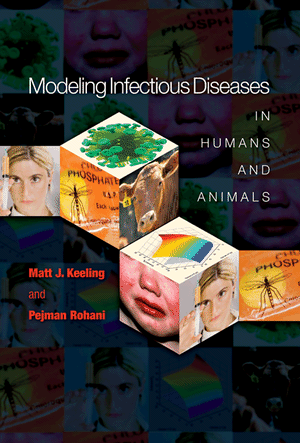|
We now introduce a
refinement
to the SIR model (Program
2.2) which takes into account a latent period. The process of
transmission often occurs due to an initial inoculation with a very
small number of pathogen units (e.g., a few bacterial cells or
virions). A period of time then ensues during which the pathogen
reproduces rapidly within the host, relatively unchallenged by the
immune system. During this stage, pathogen abundance is too low for
active transmission to other susceptible hosts, and yet the pathogen is
present. Hence, the host cannot be categorized as susceptible,
infectious, or recovered; we need to introduce a new category for these
individuals who are infected but not yet infectious. These individuals
are referred to as Exposed
and are represented by the variable E
in SEIR models.
Parameters
| μ |
is the per capita
death
rate, and the population level birth rate.
|
| β |
is the transmission
rate and incorporates the encounter rate between susceptible and
infectious individuals together with the probability of transmission. |
| γ |
is
called the removal
or recovery rate, though often we are more interested in its reciprocal
(1/γ) which determines the average infectious period. |
σ
|
is
the rate at which individuals move from the exposed to the infectious
classes. Its reciprocal (1/σ) is the average latent (exposed) period.
|
| S(0) |
is
the initial
proportion of the population that are susceptible. |
| E(0) |
is
the initial
proportion of the population that are exposed (infected but not
infectious)
|
I(0)
|
is the initial
proportion
of the population that are infectious
|
All rates are specified
in days.
Requirements.
All parameters must be positive, and S(0)+E(0)+I(0)
≤ 1.
Files
C++ Program, Python Program, Fortran Program, Parameters, MATLAB Code.
|


